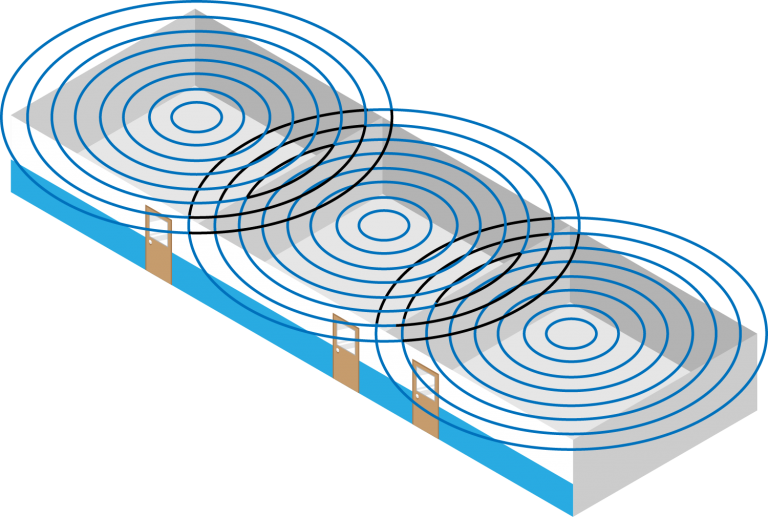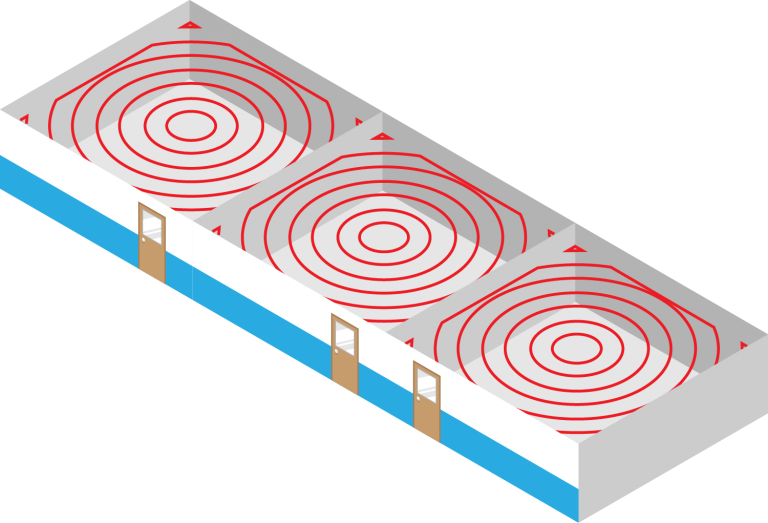Infrared technology transmits high definition sound at the speed of light, and ensures what is said in/out of the room stays there.

Not only do TeachLogic microphones overcome the physical barriers, thanks to infrared (IR) technology they:

Light can be contained and secured in a physical space. It doesn’t penetrate walls and spill into other rooms incidentally.


| Benefits of IR | Why it Matters |
|---|---|
| High Fidelity: Infrared systems can transmit/receive a full range of sound frequencies (frequency response), enabling a more accurate reproduction of audio sources like a person’s voice. | Why fidelity matters: Unvoiced consonants (f, s, t etc.) lie in the frequency range 2– 8 kHz. For students to understand speech clearly, they must have good hearing across the entire range of frequencies from 125 – 8 kHz. Most radio systems have a max of 7 kHz. |
| Low Latency: Latency is the delay before the transmission of sound. Because IR is light based, the transmission of the teacher’s voice from the microphone to the sensor is much faster than radio waves. | Why latency matters: If you have ever watched a video and noticed the person’s speech doesn’t match their lips, then you can imagine what happens if the teacher’s voice doesn’t their lips. Even a slight delay can affect comprehension. Most radio systems have ~17 ms latency whereas TeachLogic IR = 0.8 ms. |
| Wall permeation: Because IR transmission is light based, it does not pass through solid walls. | Why permeation matters: Radio waves can travel through all adjacent rooms. This can create interference and/or inadvertently “leak” the communications into nearby rooms. IR stays in the intended room and conversely stays out of other rooms. Privacy matters. |
| Channel management: Because IR transmission stays within the walls, the same channels can be used in every room. The microphone is “paired” as soon as it enters the room. | Why channels matter: With IR, any microphone can work in any room. Radio systems require that microphones are manually paired in each room and will only work in that room unless unpaired and paired again in a new room. |
Since 1994, TeachLogic has designed and developed specialized audio systems for use by educators. Our products have been installed in tens of thousands of classrooms worldwide.
Our best-in-class audio systems are well known for their long-term reliability.
© TeachLogic LLC | All Rights Reserved | +1.760.631.7800